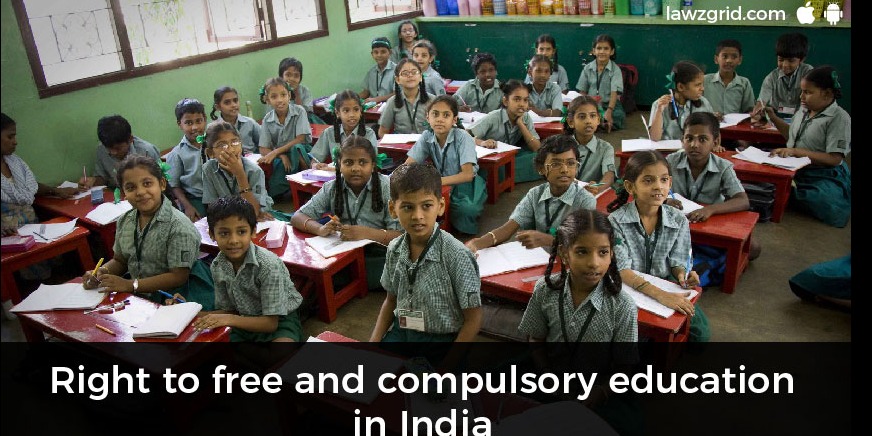

Right to free and compulsory education in India
Nelson Mandela has rightly quoted “education is the most powerful weapon which you can use to change the world”. The literacy rate of a nation depicts its development to a large extent. India being a developing country did not guarantee education as a mandatory right to its nationals soon after its independence from the Britishers. But provision with regards to education was incorporated in the directive principles of state policy.
The reason for not making this right mandatory was the financial position of the country at the time of independence and other social disturbances. However, over the period of times steps have been taken at various levels to make education available to all.The beginning was marked by the 86th Amendment to the Constitution of India.

The 86th amendment incorporated Article 21A in the Constitution of India. Article 21A made education a fundamental right stating that free and compulsory education to be provided to all children belonging to the age group of 6 – 14 years. After this amendment Right to Education Act was formulated to give effect to the 86th amendment.
The RTE Act supports and encourages the right to free and compulsory education. By free education, it is preferred that no child is required to pay any sort of fees whose parents don’t have the financial condition to afford the educational expenses of their child.
While as compulsory education means that the Government and the concerned local authorities have to ensure the fulfilment of the right to education to children.
The key features of the Right to Education Act are as follows:
1. Free and compulsory education for children belonging to the age groups of 6-14 years
2. The Act imposes an obligation is imposed on the appropriate governments to ensure that every child gets free and compulsory elementary education
3. Private educational institutions have to reserve 25% seats for children belonging to the weaker section of the society under the said Act.

undefined
4. The legislation provides that admission cannot be denied to a student in a school
5. All schools are required to have trained teachers and staff
6. All schools must have necessary facilities including a playground, infrastructure, and adequate teaching staff.
7. The Act also lays Prohibition on adopting the practice of physical punishment and mental harassment
8. Also, the screening procedure for admission of children followed by various schools is also prohibited under this Act.
9. The Act prescribes a teacher-pupil ratio
Judicial decisions:
1. Mohini Jain Vs State of Karnataka {(1992)3 SCC 666}: capitation fee case;
The Hon’ble Supreme Court has held that right to education is a fundamental right under within the ambit of Article 21 of the Constitution of India as the right to education springs from the right to life. The Court further stated that the right to life cannot be fully appreciated without the enjoyment of the right to education.
The Hon’ble Court observed that right to life is a compendious expression for all those rights which the Courts must enforce because they are basic to the dignified enjoyment of life. The right to life cannot be assured unless it is accompanied by the right to education.
2. Unni Krishna Vs State of Andhra Pradesh {(1993)1 SCC 645}:
In this case the Hon’ble Court by a majority of 3:2 partially accepted the view laid in the Mohini Jains case and held that the right to education is implicit in the right to life and personal liberty guaranteed under Article 21 but the same is available to children until they complete 14 years of age and not beyond the age of 14 years and the right to education must also be interpreted in the light of the Articles 41, 45 and 46 under the heading of Directive Principles of State Policy.
3. M.C.Mehta Vs State of Tamil Nadu {(1996)RD SC 1576}:
The Hon’ble Supreme Court held that Article 45 has obtained a status of fundamental right after the decision of Unni Krishna’s case. The court held that it is not necessary that in order for a right to be treated as a fundamental right it should be expressly stated in Right to free part III of the Constitution. Furthermore, the Court held that the provisions enshrined under part III and part IV are supplementary and complementary to each other and discarded that the rights enshrined under part III are superior as compared with Part rights in part IV.
Now the rule is well established that free and compulsory education is to be provided to children up to the age of 14 years.







